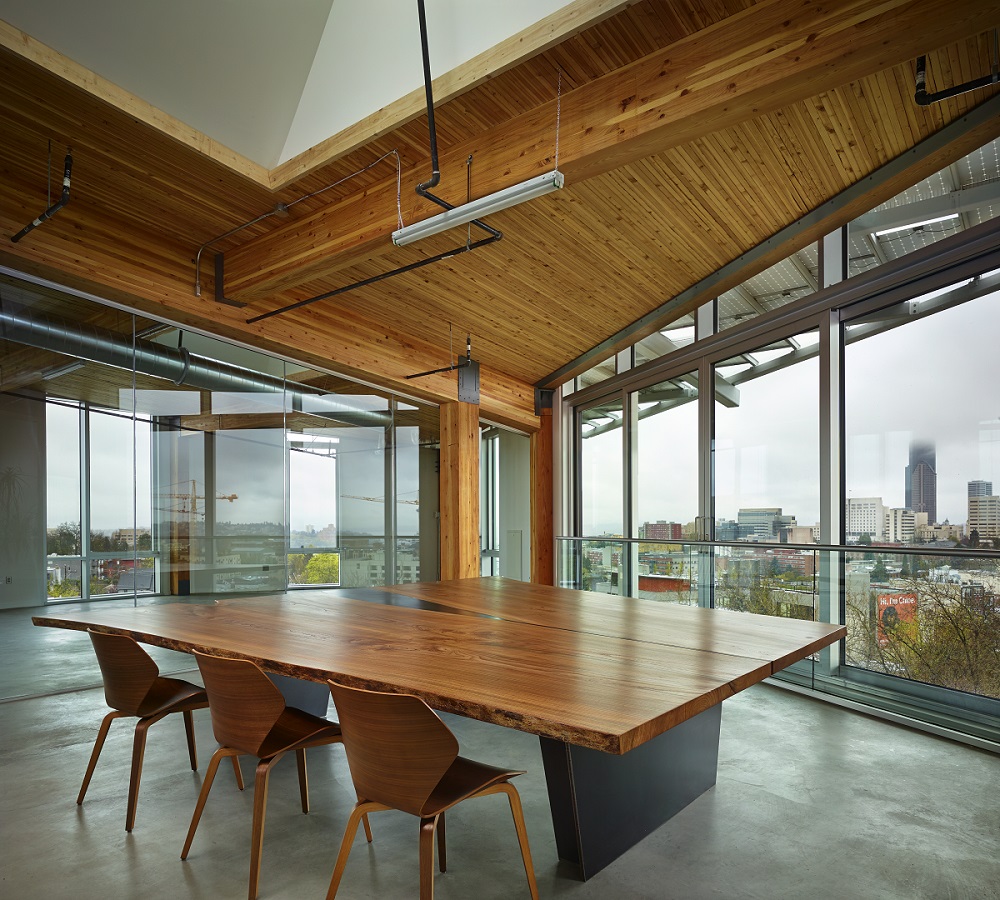Daylighting design was a top priority for the 2013 net zero-designed Bullitt Center in Seattle. The design team relied on a daylighting simulation tool to help determine everything from window configurations to ceiling heights, according to Bullitt Center officials. The project features Technoform’s TGI-Spacer for Schüco curtain wall and operable window systems with Solarban 60 glass. Photo © Benjamin Benschneider, courtesy of Technoform.
1. Education gaps.
Changing business-as-usual practices is a challenge. In the design industry, it requires educating the full project team. However, there are over 100,000 architects and additionally, owners, who need to be educated on the impacts of daylight and views. Have we reached all of them with the depth and breadth of the information, or are we “preaching to a smaller choir” and not reaching the majority of architects who need to understand the negative consequences of not designing for occupant health?
2. Good design is neither cheap nor easy.
We run into the issues of designing good daylit spaces. The tools to assess daylight availability and glare using metrics such as spatial daylight autonomy, daylight glare potential, useful daylight illuminance, etc. are available, but they are complex to use, and the solutions to creating good daylit spaces may be difficult or costly to achieve, especially if not considered at the very outset of the design process, and in the context of meeting other design goals. Getting a daylighting professional in early in the design process has historically been a challenge. It is too late to make much of an impact when designers are brought in late into the process.
Consider as an example the uptake in the daylight and views credit in the LEED certification program. Only 31 percent of LEED certified projects achieved a daylight credit in LEEDv4, so the criteria have been changed in version 4.1 to try to make it more attractive for projects to focus on. This all leads us to the fact that it costs more to hire a daylighting designer and do the appropriate analysis than to continue with the status quo. Having a daylighting designer at the table (along with other key competencies for considering thermal comfort and air quality) at the design phase is not yet business-as-usual, but needs to become that if we are to create human-centered, sustainable buildings.
I think we also have a lot of uncomfortable, overly daylit spaces that have plenty of view fenestration and daylight, but where large expanses of curtain wall are used, and thermal comfort and glare control are not adequately considered. This gives glass curtain wall a bad reputation and leads to conversations about limiting glass areas.
3. Financial payback.
We need to do a better job of communicating the payback in hard dollars and cents to building owners. The payback on these design strategies is not immediately accessible, unlike for energy, and can require owners to take a leap of faith.
Getting the results of the research (real applied research in real buildings on real people) and impact on the bottom line to building owners (and their business tenants) seems key since they are going to be making the decisions on design and budget and setting the design intent. If all building owners came to architects and said, “I want a thermally comfortable, well-daylit building with views to nature through windows, and good ventilation to provide appropriate air quality for 100 percent of the occupants of my building” as a starting point for the design requirement, then we would have different outcomes. (We also have the split incentive in speculative real estate where the owner doesn’t accrue the “health and productivity” benefits of a good/more expensive design.)
4. The real versus simulated debate.
We need to be clear about the differences between real and artificial daylight and views. The lighting industry has done a great job of selling its circadian lighting and likely gives the impression that it can replace actual daylight for the entrainment of human circadian rhythms. Data needs to be brought to the fore to demonstrate real is best, and that circadian lighting may be better than nothing, but not sufficient to replace the benefit of exposure to the much higher intensity of real daylight. Additionally, what if the power goes out? What about all the other safety issues?



